A major decision and choice when buying hiking boots or shoes is whether to get the waterproof versions or not.
You might be surprised why this is important, and which choice will be the best for you.
by Leon Pantenburg
Disclaimer: No socialite’s collection of designer footwear has anything on my collection of outdoor footwear. My shoes range from flip-flops to arctic-quality snow boots, from low-cut walking shoes to chest waders. I’m outdoors year-round and use them all. I need specific footwear for specific conditions, and these are important to me. Really, I can quit buying boots any time I want.
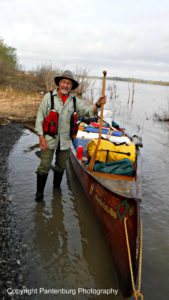
Knee high rubber boots are necessary on some canoe trips.
There are a gazillion things to consider when investing in hiking boots or shoes, such as upper composition, soles, lacing, height, color, weight etc. But IMHO, your first concern, no matter what style, design or make you chose, should be whether they they are waterproof or not.
This might seem like one of those “So what?” choices. Isn’t the best idea to just get waterproof boots and let it go at that? On the surface that seems like a good idea. And why not? That way, if you should ever need waterproof footwear, you’re in fine shape. Besides, it seems like there are more boots on the market with some sort of water seal booties than without. The liners appear to be a “thing” and many boots that would never need waterproofing have them.
But let’s talk about hiking boots and how the moisture seal can, in some situations, make them more uncomfortable.
Sore feet start when the feet start sweating and soak the socks. If you’re hiking in soggy socks, the skin softens, making the feet more vulnerable to blisters and chaffing. This can be exacerbated with a waterproof shoe. The shoe needs to breathe, so the moisture generated from the feet sweating can leave. (Read the complete story about why your feet get sore here.)

Rocky Mountain National Park, 1986: These full-grain leather Lowa boots worked well for hiking over rough trails with a heavy pack.
In 1976, I hiked the 225-mile John Muir Trail in the California Sierras. (You can read my trail journal here.) Except for brief, intermittent periods of sunshine, it rained for nine days and nights. I wore Georgia leather logger boots. My boots got damp from the rain, but I didn’t get sore feet. My feet were never so soft that I got blisters. After the Georgias disintegrated in the Tetons the next year, I wore out a pair of Raichlies then a pair of Lowas. These boots were full grain leather, none of them had moisture seals and they were worn in all sorts of conditions. Once the boots were broken in, they worked fine, rain or shine.
John Nerness, my hiking partner of some 50 years, reports similar findings. He bought a pair of Pivetta full-grain leather boots and wore them some 20 years. They had to be re-soled and finally wore out. John never got sore feet hiking that I heard about.
But what about those waterproof liners that breathe while still staying waterproof? I haven’t found one yet that works well. (John agrees. He ended up getting boots with the waterproof liners, and he notices wetter feet than when he hiked in his Pivettas.) Yeah, the liners may keep some of the water out, but they will also keep a lot of the sweat-generated moisture in. I noticed this wearing my go-to Danner Cougars. While I love the boots, they are hotter than they need be.
Waterproof or not? There is no right or wrong answer because there are so many variables. Here are some considerations to help you make up your mind
Where will you be mostly wearing these boots?
In hot climates, in desert or arid areas, your chances of getting wet feet from exterior conditions are slim. You probably won’t be walking in the rain, and chances are, there won’t be mud. In this case, an uninsulated shoe with no moisture seal is probably your best bet. My most recent hot weather boots, Danner Fullbore Coyote Hot™, have been worn in blazing heat in the Oregon high desert and they were very comfortable. They were also really comfortable on an Oregon hike along the Barlow Trail over Labor Day weekend, and on another urban hike in Portland. My other hot weather boots are the Danner Incursions.
The other extreme is wet, swampy areas. I wear knee-high waterproof boots a lot. When I get to guide with Quapaw Canoe Company on the lower Mississippi River, standard footwear is high waterproof boots. The guides are in and out of canoes all day, frequently in ankle-to-knee-deep water. When the weather gets colder, this can be a chilly proposition and soggy, cold feet are a given. But when it’s hot, your feet sweat inside the boot until they are soaking wet. It seems to be a no-win situation.
Carrying a heavy or light pack? The more weight in your pack, the more heat your body generates while carrying it. Your feet will sweat more. You might get by with lightweight, waterproof shoes with a light pack. But for carrying a heavy pack, you need solid, sturdy boots.
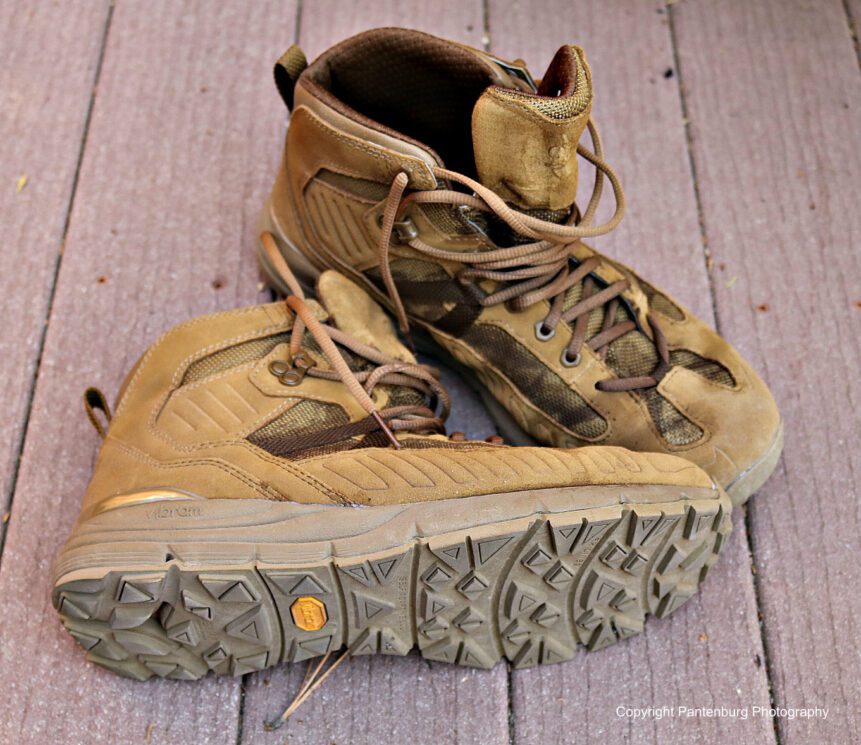
These Danner Fullbore Coyotes are the best hot weather boots I have found so far.
What kind of surfaces will the shoes most likely be worn on? This needs to be figured out as part of the boot-buying decision. If you are going to be walking on hot, summer pavement, the kind of temperatures where you can fry an egg on the sidewalk, uninsulated, breathable footwear may be your best bet. If you will be walking on sidewalks in the spring or fall when rain or sleet may be possible, the waterproof liner may be greatly appreciated.
If you need footwear for cold climates, think warm. A waterproof boot will probably be warmer initially, but perspiration moisture will still build up.
One winter, I worked construction outdoors in Iowa. All of us laborers wore snowmobile boots with removable felt liners. At night, the liners were removed to dry out before going to work the next day.
What about your socks? In my experience of learning things the hard way, what really doesn’t work well is hiking in 100 percent cotton socks in waterproof or water resistant boots. Your foot perspiration will soon soak through the sock, and the boot will hold the moisture in. You’ll end up walking in perpetually soggy socks that soften your feet and cause blisters. Sore feet are a given. (Here is why you should wear wool socks for summer hiking.)
So here’s my take on this waterproof vs. non-waterproof question: In most hot weather summer hiking, you won’t need a waterproof shoe. In cold, wet weather you may want a waterproof boot. You will still have to deal with internally-generated moisture from perspiration.
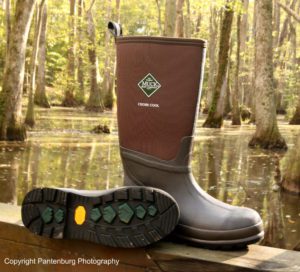
These waterproof Muck Boots are perfect for swamp wear.
My footwear needs are probably different than yours, so here is some footwear that is works for me.
Waterproof: I have several pairs of these boots, and there are many instances when they are the best footwear choice. I wear knee-high Muck Boots frequently and sometimes they are a necessity. On a very rainy swamp deer hunt last season in Mississippi’s Delta National Forest, I was glad to be wearing these boots. The water in the swamp rose with the rain, and I ended up slogging back to camp in shin-deep water.
Non-waterproof: At the opposite extreme are my hot weather desert hikers. These are Danner Fullbore Coyote Hot. They are uninsulated and not waterproof. They are the most comfortable, coolest boot I’ve ever worn. Highly recommended!
Rubber bottom, leather top: These hybrids were originally made by L.L. Bean in Maine. The design hasn’t changed in 100 years. I wore out two pairs of L.L. Beans when I lived on the east coast in Washington D.C. They were my hunting boots on the weekend, and my commuter footwear during the week. On one particularly memorable commute, I ended up walking for several blocks in ankle deep slush and snow from the Metro station. I was wearing a wool suit, wool overcoat, wool fedora and my L.L. Beans. I was completely comfortable, and could have easily walked several more miles.
If there was one boot that could cover all the environmental extremes outdoors, I would have found it by now. As it is, you probably need both waterproof and non-waterproof footwear. Luckily, there are many great variations on the market now, and you just have to decide which is best for your particular needs.
Good luck and choose wisely!
Please click here to check out and subscribe to the SurvivalCommonSense.com YouTube channel – thanks!

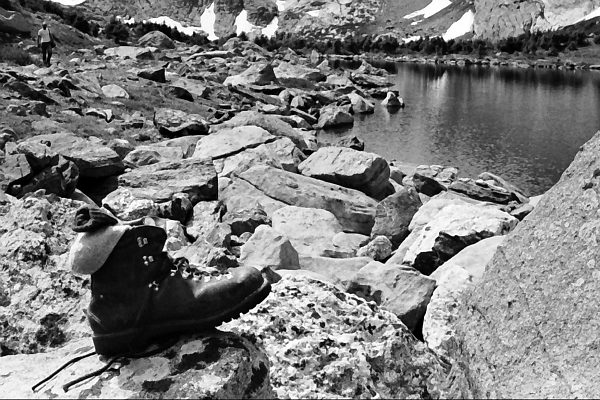
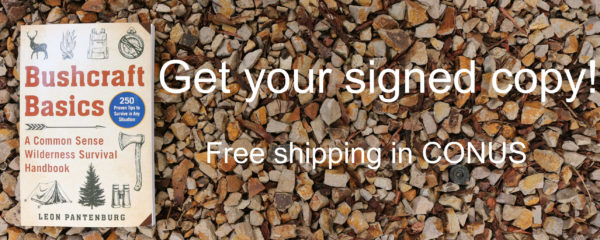

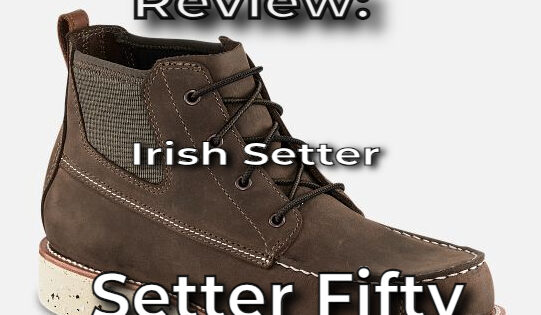
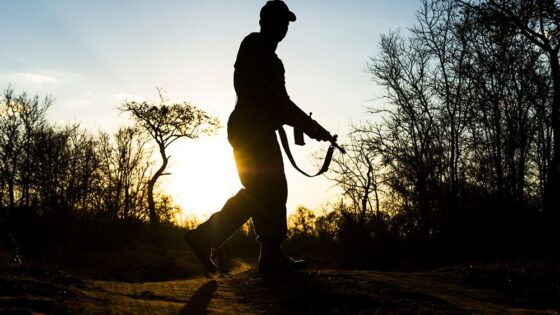
Leave a Reply